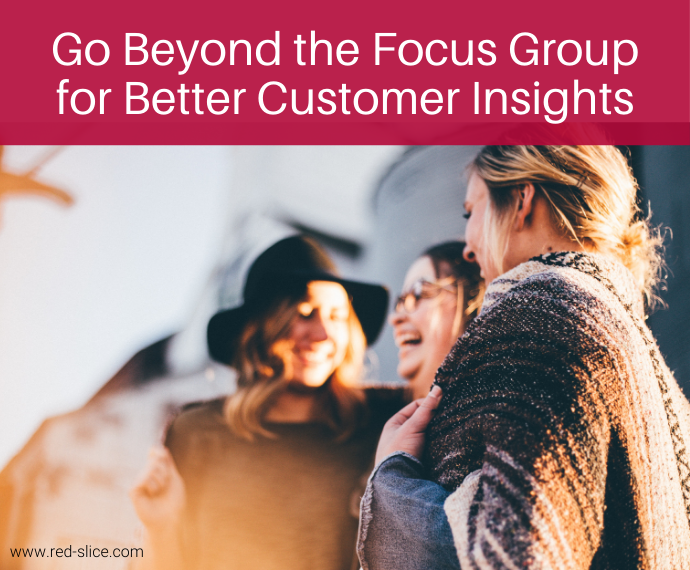
Focus groups make me cringe.
These false environments place target customers in a room where they are asked a series of questions about what they think of products, services, or ad campaigns.
We pay them to be there, get them in a room where they feel under pressure to offer an opinion or make one up, and to consider products or services in an artificial context that doesn’t at all mimic how they truly make decisions. We’ve all heard the stories of focus groupthink, where people collectively feed off of each other even, or they don’t tell the truth about how they feel because they know they are being judged, or the loudest person in the room steers the conversation in one direction.
It’s not that focus groups in and of themselves are horrible. In the past, I oversaw focus groups with HR Managers and did get useful nuggets form focus groups where we asked them about their everyday jobs, challenges, and wins, rather than about a specific product, feature or ad campaign. The intent was to understand their industry, not test a product or message idea. So it worked well.
Data is great and can validate assumptions or strategies. But you have to understand how the data is collected and where it can be biased – and what stories you may be missing behind the data. You also have to know when it’s time to stop collecting data and start gathering insights.
Yes, data and insights are two different things.
If you want to know how your customers think or what challenges they face, you don’t have to spend hundreds of thousands of dollars on fake environments that won’t give you real answers.
Go beyond data collection. Have real, messy, organic conversation so you can get to know your customers as people. (TWEET THIS!)
One on one. In a non-biased environment. In a way that fosters active listening.
Try:
- A casual phone interview
- A fun networking dinner
- Meeting up with customers in their own environment, in the place where they use your products or make buying decisions.
Qualitative interviews can be time-consuming, But honestly, they yield better insights. Yes, you might not have a pretty chart full of data points that cannot be disputed. You won’t be able to impress the board with reams of graphs and pie charts.
But you can uncover motives, aspirations, goals, challenges. You can discover the right words to use, the emotions behind their decisions. You may stumble on an unexpected motivating angle or use case that you never even thought to ask about in a multiple choice survey.
I am able to get priceless insights from my clients’ customers with just a casual 30 minute phone call and some guiding questions.
Take the time to get to know your customers as people. This is the best way to appeal to both their intellect and emotion when building solutions that resonate with them.
More great insights on going beyond the data, on The Empathy Edge podcast:
Humanize Your Data to Reveal Emotions



